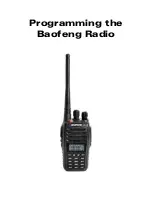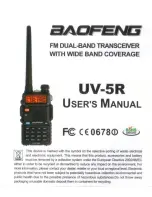
Appendix
En-98
■
Server playback
The AV receiver can play digital music files stored on a
computer or media server and supports the following
technologies:
• Windows Media Player 11
• Windows Media Player 12
• Windows Media Connect 2.0
• DLNA-certified media server
If the operating system of your computer is Windows
Vista, Windows Media Player 11 is already installed.
Windows Media Player 11 for Windows XP can be
downloaded for free from the Microsoft web site.
• The computer or media server must be on the same
network as the AV receiver.
• Up to 20,000 folders can be displayed, and folders may
be nested up to 16 levels deep.
Note
• Depending on the media server, the AV receiver may not
recognize it, or may not be able to play its music files.
■
Remote playback
• Windows Media Player 12
• DLNA-certified (within DLNA Interoperability
Guidelines version 1.5) media server or controller device.
The setting varies depending on the media server or
controller devices. Refer to your devices’ instruction
manual for details.
If the operating system of your personal computer is
Windows 7, Windows Media Player 12 is already installed.
For more information, see the Microsoft web site.
• USB mass storage device class (but not always
guaranteed).
• FAT16 or FAT32 file system format.
• If the storage device has been partitioned, each section
will be treated as an independent device.
• Up to 20,000 folders can be displayed, and folders may
be nested up to 16 levels deep.
• USB hubs and USB devices with hub functions are not
supported.
Note
• If the media you connect is not supported, the message “
No
Storage
” will be displayed.
• If you connect a USB hard disk drive to the AV receiver’s
USB
port, we recommend that you use its AC adapter to power it.
• The AV receiver supports USB MP3 players that support the
USB Mass Storage Class standard, which allows USB devices to
be connected to computers without the need for special drivers or
software. Note that not all USB MP3 players support the USB
Mass Storage Class standard. Refer to your USB MP3 player’s
instruction manual for details.
• Protected WMA music files on an MP3 player cannot be played.
• Onkyo accepts no responsibility whatsoever for the loss or
damage to data stored on a USB device when that device is used
with the AV receiver. We recommend that you back up your
important music files beforehand.
• MP3 players containing music files that are managed with special
music software are not supported.
• Operation is not guaranteed for all USB devices, which includes
the ability to power them.
• Do not connect your USB device via a USB hub. The USB device
must be connected directly to the AV receiver’s
USB
port.
• If the USB device contains a lot of data, the AV receiver make
take a while to read it.
• USB devices with security functions cannot be played.
Server Requirements
Minimum system requirements for Windows Media
Player 11 on Windows XP
Operating system
Windows XP Home Edition (SP2), Windows XP
Professional (SP2), Windows XP Tablet PC Edition
(SP2), Update Rollup 2 for Windows XP Media Center
Edition 2005 (KB900325), October 2006 Update Rollup
for Windows XP Media Center Edition (KB925766)
Processor:
233 MHz Intel Pentium II, Advanced
Micro Devices (AMD), etc.
Memory:
64 MB
Hard disk:
200 MB of free space
Drive:
CD or DVD drive
Modem:
28.8 kbps
Sound card:
16-bit sound card
Monitor:
Super VGA (800 x 600)
Video card:
64 MB VRAM, DirectX 9.0b
Software:
Microsoft ActiveSync (only when
using a Windows Mobile-based Pocket
PC or smartphone)
Web browser:
Microsoft Internet Explorer 6 or
Netscape 7.1
USB Device Requirements
Содержание DTR-40.4
Страница 1: ...AV Receiver DTR 40 4 Instruction Manual ...
Страница 102: ...Appendix En 102 Memo ...
Страница 103: ...Appendix En 103 Memo ...







































